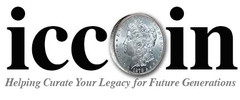Making “Heads” and “Tails” of Numismatic Terms
Aug 5th 2024
During my first week of work at International Coins & Currency (over 35 years ago!), I repeatedly heard the terms “obverse” and “reverse.” New to the collecting world, I had no idea what those funny words meant. It didn’t take long to discover that they were official words for what I called “heads” and “tails.”
Most every hobby has a language of its own. Numismatics is no exception and has a rich, full vernacular of terms. For example, are you familiar with the words “bag mark,” “incuse” and “planchet”? Do you know what design to expect on a “Barber” quarter? In what way does “toning” affect a coin?
One of the pleasures of coin collecting is being acquainted with distinctive idioms. Knowledge of these terms can also be extremely valuable.
Coin grading is an area where understanding of numismatic wording is essential. New collectors, hearing a grade of “Good,” may expect a coin in favorable condition. Actually a grade of Good denotes a coin at the low end of the quality spectrum with heavily worn designs and absence of fine detailing. New collectors quickly learn that lack of knowledge of grading terms can lead to very expensive mistakes. (For more information on grading visit the resource center at www.iccoin.com.)
Just in case you didn’t already know; bag marks are minor abrasions on uncirculated coins caused by contact between coins in a mint bag, incuse is a recessed rather than raised design, and a planchet is the metal disc on which the design of a coin is impressed. Barber quarters feature a Liberty Head design and toning describes the change in color on a coin’s surface due to the metal’s exposure to the elements.
You can learn more about all types of important numismatic terms when you visit our resource center at www.iccoin.com.
Jennie Lutton, for ICCoin.com

